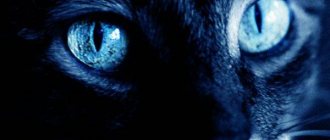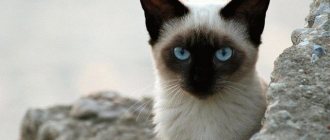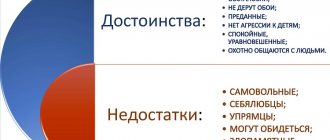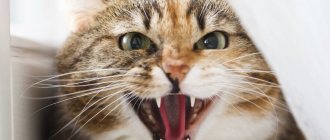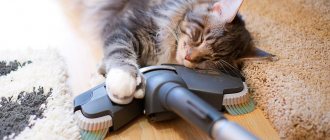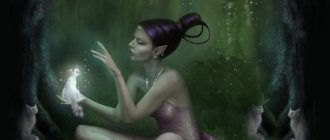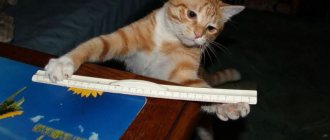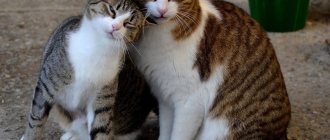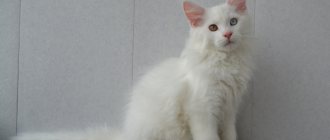Hi all! Tomorrow spring will come, albeit only a calendar spring, which not only people can enjoy, but also other inhabitants of the city who live their secret lives next to us: for example, city hedgehogs and ordinary yard cats. On this occasion, I took out from my own archives a disk with photographs of yard cats and cats recorded on it many years ago, and also remembered several cat stories and one cat poem (it is at the end of the article).
Not all the cats in the photo are March cats, or rather, all of them are not March cats) But all of them are well known cats with whom I had the chance to communicate for some time. In most cases, communication was not fleeting (he came up and took a photograph), but stretched out over several weeks, often months.
Communication with a cat is a kind of energy exchange. You bring food to the cat, the cat gives you his affection)) For those who are friends with cats, it is no secret that they know how to communicate with people using sign language. And that not every “kiss-kiss” is significant for a cat; it is very important who exactly pronounces it and how. Within a day of meeting each other, the cat recognizes the friend’s voice and responds to it, remaining indifferent to the calls of others. Tested in practice.
A little cat history
Cats have been with humans for more than 9,000 years, as evidenced by archaeological research and ancient writings. And in those days, no one thought about whether a cat belonged to a particular breed. In Ancient Egypt, cats were revered as sacred animals and were also valued as excellent rodent hunters. In the Middle Ages, in some countries they were credited with magical properties and connections with evil spirits, in others they were considered special creatures that were a symbol of goodness and peace in the home.
The history of the mustachioed tabby is very rich, but it takes on new colors when cats began to be seriously bred, endowing them with special characteristics.
Since the end of the 19th century, active breeding work has been carried out, which gives birth to more and more new breeds of cats. This produces extraordinary mustaches with varying lengths of fur or even hairless ones, with amazing colors and interesting character traits. Each representative that is recognized by a felinological organization is unique and finds its fans. But with all the variety of purebred purrs, yard cats remain the most numerous and popular.
What does color depend on?
The set of genes of any animal is a kind of puzzle, from which a future picture is created by forming a certain sequence of elements. It includes the color of the coat, the color of the nose, eyes, their frame and other external characteristics.
The mechanism of inheritance of parental characteristics occurs differently in each kitten (depending on which genes in the parents are dominant and which are recessive).
Important! There are no completely monochromatic ginger cats. They always have a tabby color (more or less noticeable).
In the formation of the main color of a cat’s coat, only one pigment plays a role - melanin, but in two of its varieties: pheomelanin (responsible for the predominance of the red tint) and eumelanin (showing shades of black). Nevertheless, the real picture is as follows: completely monochromatic cats are the exception rather than the rule, and the predominant and, most importantly, favorites in the household are spotted, brindle, or wearing “brown” cats.
It should be noted that it is this palette that reflects the true appearance and character of real cats (striped colors are the closest to the color of their ancient ancestors, this is what makes them feline). Eumelanin exhibits all shades of black, ranging from charcoal to lilac, and pheomelanin can be demonstrated in a palette from bright amber to soft beige.
The first thing you must learn to find out what the breed of tabby cats is called is: “tabby” is not a breed, but a peculiar color of a cat, and tabby pets have different breeds. We have all seen brindle and spotted cats more than once, and those who wore beautiful patterns of color on their “clothes.” So: special genes of group T, which are found in all representatives of the cat world, are responsible for the formation of such an unusual pattern on the coat of cats. Their peculiarity is that they are activated only upon interaction with gene A - it is this allele (in the dominant variant) that provokes the formation of zonal coloring on individual hairs or on the entire area of the coat.
Did you know? There is a legend according to which, after the long-awaited birth of Jesus in Bethlehem, a kitten came to the birthplace in the stable and began to walk around the manger. Then he lay down next to the baby and began to bask next to him, while the young mother stroked his fluffy head. After some time, the letter “M” magically appeared on the animal’s forehead, like the capital name of the mother of Jesus.
It is also worth noting that the “tabby” coloring is very popular among ordinary or yard cats. Among all the owners of this pattern, you cannot find two kittens with absolutely identical patterns: each of them has its own curls, mysterious and unique in its own way.
But all tabby cats have a mandatory condition, according to which their color belongs to this type. This feature is usually called the presence of the letter “M” on the forehead. Its manifestation can be very different depending on the color and shade of the wool hairs themselves, as well as on the size and intricacy of the shape.
Among the main types of “tabby patterns” the following types and their characteristic features can be distinguished:
- tiger (mackerel) : narrow lines predominate, reminiscent in appearance of the ribs of a fish skeleton, appearing as peculiar narrow bracelets on the paws and tail, and as necklaces on the neck and chest;
- marble (classic) : there are dense, large curls and continuous lines throughout the body; while those that go from the back of the head to the shoulders resemble a butterfly in shape, and one or more rings on the sides are often called an “eye” or “rosette”;
- spotted : spots of different shapes and sizes are located on the body (these patterns are also called the “broken” version of the brindle or classic tabby due to the supposedly breaking stripes and curls);
- ticked : markings appear on the limbs rather than just the body, and each individual hair may be a different color at the same time.
Did you know? There is a belief among Muslims that the symbol of the letter “M” appeared on the forehead of tabby cats because the Prophet Muhammad loved these animals very much.
Is there a yard breed?
The very concept of “breed” is very young – it is no more than 200 years old. Felinological organizations identify special traits and properties in individual cats, then prescribe and approve a standard with these unique characteristics, thereby giving the world a new purebred beauty.
Felinologists call yard cats outbred, although this statement can be considered erroneous, because the ancestors of all purrs were wild cats, which have different external characteristics and character, which is explained by different climates and ability to adapt.
Thus, native breeds with characteristic external data and character traits can be called yard breeds, because the distinctive characteristics of these purrs were formed thanks to nature, without the “selective” hand of man.
These native barn cats include:
- Turkish Angora.
- Celtic cat.
- Persian cat.
- Siberian cat.
- Siamese cat.
Striped cat breeds
Today there are a lot of cat breeds that have a mandatory or possible “personal” tabby pattern. We will look at some of them, which are the most popular:
1. The Asian Tabby is a truly magnificent variety of the Asian cat breed group that was created by mating a Burmilla with a Persian Chinchilla in England in the 1980s. With a medium-sized head, a rounded shape and a short but wide muzzle, erect ears with a slight tilt forward, wide and rounded ears at the tips, as well as a long (or medium-length) tail, this beauty is one of the most popular cats in the world.
Her coat is short, with characteristic tabby colors: spotted, merle, brindle (mackerel) with vertical parallel stripes, ticked with a pattern on the muzzle and agouti throughout the body. Large, crescent-shaped eyes with an oriental or eastern slant are the main notable feature of this cat breed.
2. The American Bobtail is a short-tailed cat, unusual in its appearance, the breed of which was bred in the 1960s in the USA, the state of Southern Arizona, thanks to the stray kitten Yodi with the same distinctive feature - a short tail.
It is important for cat owners who care about the health of their pet to have information on how to determine if an animal has worms, and what should be done to avoid such a problem. It will also be useful for you to read about how to cure a cat from: lichen, subcutaneous mites, ear mites, fleas and lice.
External characteristics:
- head - small in size, in the shape of a wide wedge;
- ears - neither large nor small, slightly leaning forward;
- eyes - round or almond-shaped, located at a great distance from each other;
- tail length up to 7 cm, fluffy, mobile, but may be completely absent;
- the coat is short or medium length, thick but soft (all kinds of colors are recognized, with all the “tabby” variations being the most beautiful).
3. Cymric is a generally tailless cat breed, bred in the 16th century on the Isle of Man as a result of crossing a Norwegian longhaired forest cat with an unknown breed of tailless cats. This breed is also called the Welsh cat. Her head is rounded, her muzzle has a short nose; The ears are wide, medium in size, with protruding tufts of wool around them.
The color of large round eyes depends on the color.
The coat is long and fluffy, with a characteristic dense undercoat (has all types of colors, except spotted tabby, chocolate and lilac). 4. The Norwegian forest cat was first mentioned back in 1599 as a permanent resident of farms in Norwegian villages. However, the breed was officially registered only in 1977.
Did you know? According to myths, it was the Norwegian forest cats that accompanied the Scandinavian Thor (god of thunder, storms and fertility) and Freya (goddess of love and war). There is an opinion that these animals were harnessed to a chariot on which the deities moved. In addition, it was believed that all cats in Scandinavia were messengers of the goddess Freya, so the inhabitants of the settlements always left milk for these sacred animals or fed them so that the goddess would bless the farmers for a harvest and the young for a happy union.
External characteristics of Norwegian cats:
- heavy weight,
- large head in the shape of an equilateral triangle,
- ears wide at the base and erect,
- widely open oval-shaped eyes,
- long and fluffy tail.
By the way, they have tassels on their ears (like a lynx), and on their chest there is a unique “beard” collar.
The length of the coat is predominantly medium, with a dense undercoat (tabby color options: classic, brindle, spotted).
When caring for a cat, it will be useful for you to know about such things as: mating cats, pregnancy of cats, childbirth in cats, trimming claws, and also read: how to properly wash a cat, what cats suffer from (skin diseases), how to train a cat to use a litter tray, how to care for cat whiskers and how to get rid of the smell of cat urine.
5. The Pixie Bob is a breed of cat of aristocratic origin, often called the “domestic lynx.” Officially recognized in 1995, the name comes from the name of the first cat of this breed.
The external characteristics of the pixie bob are a pear-shaped head and large, wide ears at the base. The shape of the eyes resembles triangles, softened at the edges, and their color varies from golden to green. A small tail (up to 5 cm) and medium length or short hair are the characteristics by which you recognize this breed. By the way, they can only have tabby color: spotted or rosette black.
Did you know? The pixie-bob cat breed is recognized as a real treasure of America. It is not recommended to export them from the continent.
6. Toyger is a recent breed of cats, very much reminiscent of tigers in appearance, which was bred by the daughter of the creator of the Bengal cat breed. Country of origin: USA, California. The toyger has a medium-sized head, small ears without tufts, small or medium-sized eyes with a round shape and a bright color that is striking in its richness. Characteristic features also include a low-set tail and short hair.
Dark, almost black or brown, stripes on a red background are the tabby color characteristic of the toyger.
7. Maine Coon , or May raccoon cat , was bred a hundred years ago in North America and was a descendant of the same ship's rat catcher, without whom not a single ship set sail. Now this breed is one of the ten best and most popular cat breeds in the United States. A massive head with straight sharp outlines, characteristic long whiskers on the muzzle, high, vertical and almost straight set of ears, as well as a long and very fluffy tail - these are the external characteristics by which you recognize a Maine Coon. This breed has large, oval-shaped eyes that can range in color from amber-golden to yellow-green.
The Maine Coon's coat type varies depending on where it grows: on the shoulders, head and legs - not too long, quite dense, lengthening along the body from the sides, back and belly (tabby color: cream marble, brown brindle).
8. Asian golden cat , or Temminka, is a wild animal, the keeping of which is not allowed. It is similar in appearance to a puma, but differs in size and color. To create a domesticated copy of this cat, they came up with a variety of golden-colored Asian tabby.
9. Soukok is a cat breed first discovered in Kenya on coconut plantations and named after one of the districts of the same name. After that, it was taken to Denmark for further research, and in 1992 it was formalized. The breed is distinguished by a small wedge-shaped head, almost flat on top, large almond-shaped eyes, medium-sized ears and a long, medium-thick tail. The coat is short, close to the body, distinguished by a peculiar shine (color types: marbled tabby with dark brown or black patterns on a gray background of the body).
10. The Briton is one of the most popular and most common cat breeds, which was allegedly brought to the British Isles by the Romans. It stands out thanks to its unusual coat, which is often called “plush”. Possible tabby colors of British kittens are distinguished by stripes, marbles and spots.
Learn about the following cat diseases: herpes, conjunctivitis, third eyelid, mastitis, gingivitis, epilepsy, viral peritonitis, mycoplasmosis, piroplasmosis, calcivirosis, pyometra, toxocariasis, aspergillosis, coronavirus infection, epiphora, distemper (panleukopenia) and urolithiasis.
It is very difficult not to recognize the British: their heads are round and rather large in size; ears are small, rounded and, due to their low size, almost invisible; the tail is thick, of medium length, and according to the type of coat, the pets are classified as short-haired or semi-long-haired, and the color can be either plain or with a pattern.
11. Scottish fold cat (Scottish fold or Highland fold). Origin story: in 1961, on a Scottish farm, a snow-white cat with unusually shaped ears was born, who was named Susie. She herself, as well as her offspring, were not recognized for a long time, because they thought that this shape of the ears caused deafness, but in 1994 it was nevertheless officially registered and became popular throughout the world. In addition to solid color, tabby patterns also began to appear.
External features:
- shape and size of the head - round, large;
- ears: three degrees of drooping ears (first - only the tips are bent, second - the entire auricle, but the space between the head and ears is visible, third - the ears are pressed tightly to the head);
- shape, size and color of eyes: round, large, different shades of brown and blue;
- tail length and thickness: medium, thick;
- type of coat: thick, dense, short and long (this is where the name of the breed comes from: Scottish - short wool, Highland - long).
Tabby color in Scottish cats can appear in all types.
Important! The body of tabby cats is mainly decorated with bracelets, necklaces, and medallions.
“Not purebred” or non-standard genotype
The appearance of an unborn yard kitten is very difficult to predict, because it is born from a mixture of two or even several breeds. Therefore, color, coat length, eye color and other characteristics are always a pleasant surprise.
Breeds of yard cats are varied. The variety of coat colors of mongrels can be the envy of any exotic purr participating in championships. This can be a single coat color or a combination of two or even several shades. The patterns and markings on the base color also vary. A common color is dark stripes on a light background. It is this pattern that helps the animal camouflage itself in natural conditions and hunt successfully.
The fur of yard cats can be long or short, but what you definitely won’t find is the complete absence of fur on the animal.
The mongrels are in most cases medium in size, and their weight ranges from 3 to 6 kg.
The character of yard cats, unlike purebred cats, is varied. They are not characterized by aggression and touchiness. They generally show emotions very carefully.
Mustachioed mongrels love active games and appreciate the attention of household members. They can become attached to someone in particular or love everyone with the same love at the same time.
These cats have a negative attitude towards the absence of their owners and can even fall into a kind of “cat” depression. This is manifested by refusal of food, hair loss, etc. But this condition mainly applies to “apartment” cats that cannot freely go outside.
Yard cats, photo
Yard cats and cats in the amount of 4 pieces at the feeding area.
The fluffy yard cat lay down in a hole in the ground and, curled up, tried to take a nap. But it was not there. Photoshoot!
White street cat. With his paw tucked in, he looks expectantly at the stranger. Not all people are equally harmful, perhaps this one will be useful?
The dark gray cat hisses: Better not come closer! I have fangs and claws!
A barn cat, sitting on a branch, meditates with his tongue hanging out. The only thing missing from a complete set is a gold chain on a tree.
Another street cat in a tree. This robber with a wary, stern look is clearly not in the mood for philosophical reflection.
And this cat, judging by its location, fatness and grooming, is domestic. But not apartment-based, because... spends most of his time on the street - someone should watch and control)
Pet care
Yard cats also need the care and attention of their owners:
- Grooming. The coat needs to be brushed regularly. The frequency of the procedure depends on the length of the animal's fur. For short-haired dogs, it is enough to do this 2 times a month, and for long-haired dogs, once a week.
- Eye care. They need to be inspected and wiped with a damp swab when dirty.
- Water procedures. There are very few cats that favor this process, so you should not bathe your pet too often. Usually mongrels themselves monitor the cleanliness of their fur. If the cat returns dirty after active street festivities, you can give it a bath.
- Nutrition. It should be balanced and include both proteins (meat, fish, eggs, fermented milk) and carbohydrates (porridge, vegetables, crackers, root vegetables).
At the same time, yard purrs should be taken to the veterinary clinic for preventive examinations. It is especially important to do this when purchasing a pet, because... It is unknown whether he is healthy or not.
Barn cat Gray
A couple of times he quickly ran from one yard to another along the work area adjacent to the warehouses, where I sometimes went out to get some fresh air. One day I called out to him and he stopped. He let me come to him. He was thin, with matted and unkempt fur, covered in some burrs. His tail, apparently, was once broken in two places, and subsequently fused incorrectly, now resembling the shape of a fairly bent corkscrew.
At first, this street cat came for food once a day, at the same time. It was possible to set the clock by it, so accurately did he know when a bowl of milk would appear on the roof of the garage, adjacent to the back wall of our yard.
After a few days, the cat realized that now there was no need to scavenge for discarded bread, and began to spend more and more time on the roof. And spend more time on your hygiene. He cleaned his skin until it shined and straightened up slightly.
It often happened that there were busy days in terms of work, and I forgot not only about feeding the cat daily, but also about my own lunch. Then someone would come from the warehouse to say: “There’s a cat demanding you!”
Within a couple of weeks, Gray turned into a fluffy handsome man. He became completely tame, affectionate and completely relaxed, graciously allowing himself to be photographed at any time.
A week later, he began to bring his green-eyed friend, the same yard cat, to dinner. When treating her, he always made sure that she knew when to stop, at a certain moment tactfully moving her muzzle away from the bowl.
Then other cats began to appear periodically on the roof. I had to bring more milk and sausage to work than usual. And one bowl was not enough for everyone.
A couple of times I happened to see an unusual street cat on the same roof, which never approached the bowl, but only sat at a distance, like a sphinx with an unblinking gaze, watching what was happening. There was something frightening about her.
Strengths of mongrels
Each purebred cat is unique and valued for some of its exceptional characteristics. Yard mustaches may in some ways not be comparable to their purebred counterparts, but they have a lot of advantages:
- Health. The life expectancy of mongrels is usually longer than that of purebred purrs, because the former have a stronger and more lasting immunity to most street infections. Selection work weakens the protective functions of the cat’s body.
- Temperament. Domestic breeds have the most flexible and gentle character. If such a cat is picked up on the street, then its joy will know no bounds - it will become attached to its owner for life.
- Knitting. Finding a partner for a yard pet will not be difficult. Most likely you will have many options to choose from. Waiting for a new offspring is always a mystery, because it is impossible to predict what coat color, color and eye shape the future kittens will have. It is quite possible that such a kitten will become the founder of a new breed.
- Help with housekeeping. Catching an annoying rodent will not be difficult for a mongrel; they have a well-developed natural instinct.
- Exhibitions. There are exhibitions for outbred pets, where the external characteristics of purrs and their grooming are assessed. It’s great that yard breeds also have the opportunity to show themselves in all their glory.
- Price. Anyone can buy a yard pet. Usually they come to visit themselves, offering to leave themselves. In this case, it is almost impossible to refuse.
Cat's thoughts (winter cat)
Cat's thoughts , 2003, audio version, click on play, listen) Author: Konstantin Vervekin. Reader: Boris Abramov.
While I was sorting out old cat photos, I remembered that there was something to add to them. I dug up my own poem from fifteen years ago in my files. It became interesting how it would sound in someone else's performance. Without hesitation, I ordered a voiceover from a professional announcer. A few hours later I received the result.
I was sent four versions of the recitation, slightly different from each other intonationally. Later, if I have time, I’ll sit in Adobe Audition and try to put together the optimal final version. In the meantime, I attached one of the sent tracks with minimal processing.
Your opinion is interesting: did the reader manage to convey the mood of the poem? Write in the comments.

